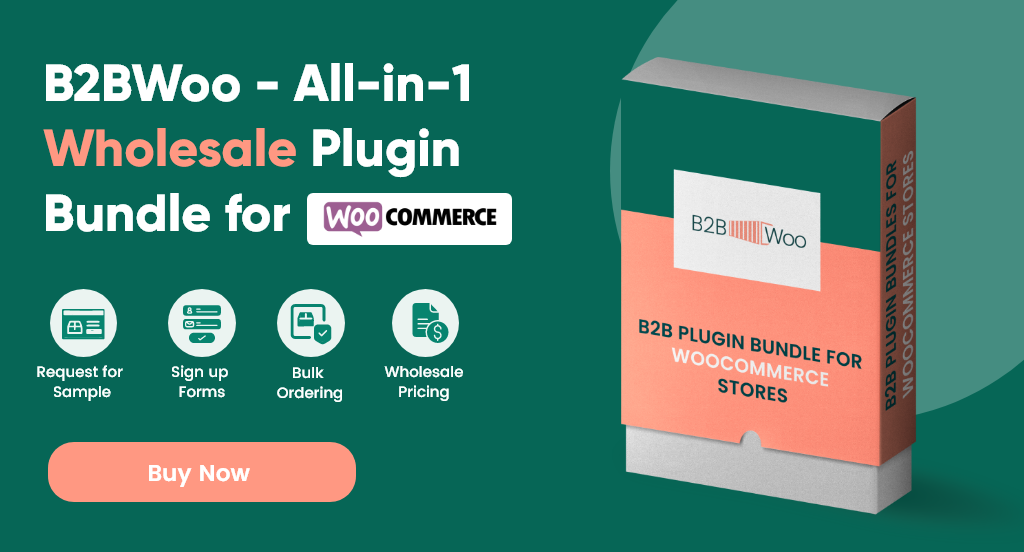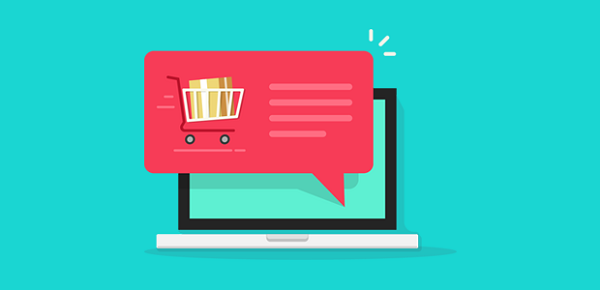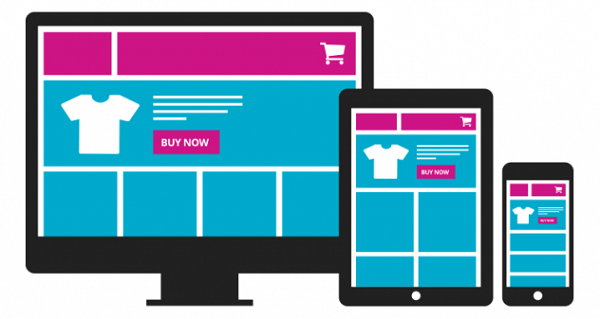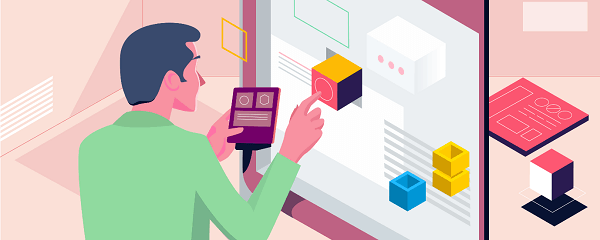B2B and B2C eCommerce are prime definitions of the term, “same but different, but still same”. While some B2B eCommerce features are indeed distinctive of each other, some are similar. The distinctive part stands out because, of course, selling to businesses is remarkably different from selling to consumers.
If you’re planning to get started with B2B eCommerce and are looking to see what makes B2B stand out from B2C, you’ve come to the right place.
In this post, we’ll be discussing the sixteen essentials features to look for in a B2B eCommerce platform. Note that some of these B2B eCommerce features, while overlapping with B2C, are still as relevant for B2B eCommerce.

So, let’s begin.
1. Complex Pricing

The B2C pricing model is almost always universal. All the customers purchasing a specific product are paying the same price.
B2B is very different, in comparison. Store owners have to alternate their prices based on multiple customer tiers. For example, the top-tier, “regular” customers get more discounts as compared to new customers.
The reason behind this lies in the volume of trade being conducted. In B2B, bulk buying (which we’ll get to later on) is the standard practice.
When you have bulk buyers who have invested so much into your business, you’re bound to give back to them through discounts.
Complex pricing rules make for better wholesale management. Ideally, your store should be able to integrate such rules at every level of the product hierarchy.
2. Catalog Management Tools

Another essential tool in B2B eCommerce is customer catalogue management. It’s a useful tool that helps improve sales and the user-experience for your brand.
Extending the entire breadth of your eCommerce store, catalogue management essentially includes restrictions on displaying a catalogue to specific users.
For example, you have a user base that’s interested in a particular product niche. Similarly, you have another user base that’s focused towards another product category. Wouldn’t it make sense to display products to specific user groups based on their preferences?
An efficient catalogue management tool allows you to display products that are entirely based on the preferences of your user-groups.
Ideally, you should be able to set up individual groups, hide/show products depending on whether a user has signed up or not.
Coupled with customized pricing, catalogue management can make your operations even more granular.
3. Corporate Account Management

Part and parcel of the B2B experience, corporate account management allows you to manage your B2B partners efficiently.
The B2C buyer is very different from the B2B buyer. In the former, you have one buyer viewing and purchasing a single product for more or less, personal consumption. The latter case is significantly different.
B2B buyers aren’t singular buyers but instead purchasing parties who represent a company. Since the consequences of buying a low-quality product are high, the decision-making process is also complicated.
Wouldn’t it be better for them to have their company account within your store where they can manage their purchases as a buyer group?
This is where corporate account management comes in. Given the right eCommerce tools, you can create a company profile for your buyers. Within that profile, not only can they conduct purchases as a single entity, they can also create a hierarchy closely simulating their physical roles within the organization they’re representing. Once they’ve set roles, they can assign relevant permissions; restricting certain users within the hierarchy from such roles.
Corporate account management can prove highly useful for your business. In the scenario where it does not, we see nothing but ensuing chaos; with multiple buying groups scattered across the store without any proper organization.
4. Quick Ordering

Most users prefer to purchase multiple products from a single store. This is not unlike B2C, wherein they can add to cart multiple products and check out. But the main difference lies in the term of regular users.
You see, B2B customers, once they have switched to a single product source, keep with the B2B store rather than moving to a newer source unless it’s necessary. Because of this, you need to focus on keeping those customers satisfied. Quick ordering helps you do just that.
It works by allowing your customers to purchase products from a table rather than going to each product page. By simply searching for a product through its name or serial number, they can add products directly to the table.
This helps improve the B2B experience for regular customers by allowing faster purchases for customers.
On top of that, you should ideally have the options for not only adding products to cart but also the ability to add a request for quote button that lets you request multiple products simultaneously.
5. Request for Quote

Another vital functionality to have for your store is the request for quote functionality. With this functionality, customers can quickly negotiate with the user on the price of a particular product on display.
You can integrate such functionality in two ways. The first one involves customizing a special functionality that allows users to click on a request for a quote button and then negotiate with the owner.
In the second scenario, one exclusive to WooCommerce, you replace or place it side by side with the add to cart button using a WooCommerce request for quote plugin.
Either way, the goal is better communication with the customer based on price.
6. Bulk Discounts

A common feature within the B2B eCommerce infrastructure, bulk discounts are an excellent way to encourage better order values for your business.
This B2B eCommerce feature is a must-have if you are operating in a marketplace. You can set up discounts for a particular product or a set of products which, if purchased in bulk, can prove beneficial to the purchaser.
7. Minimum Order Quantities (MOQ)

Perhaps the best tool for managing your business’ bottom-line, MOQ can prove extremely useful in ensuring that a minimum amount of product is purchased.
B2B eCommerce stores usually display an error that a particular product can’t be purchased if x amounts of quantities are ordered as opposed to y quantity. Whatever eCommerce solution you select, make sure this functionality is present within it.
8. Customer Registration

B2B prices, compared with B2C, are not visible. There is a drawback to it since your products aren’t as open to the public. But generally speaking, a B2B store isn’t inclined to display its work to the general audience. It restricts itself to only B2B customers.
For a B2B store, a customer registration system is essential. It allows only approved buying parties to log in to your store and see the products on display. Regular users visiting your store won’t be able to view products.
By “approved”, we mean not letting just anyone log in to the store. Instead, owners should only approve people who have the credentials (company representative, business owners, etc.) to enter into the store.
If you’re starting, such an approval functionality is not a “must-have” but rather a “nice to have” since you want to reach a broader audience. You should stick with simple customer registration.
For established eCommerce stores, such functionality is very beneficial since it prevents competitor spying, spam attacks, and ensures an overall secure B2B eCommerce store.
9. Tax Exemption

Essentially speaking, eCommerce is an international trade system. As such, taxation can be quite complicated since tax laws vary across the world. Things can become even more complicated if one of the two countries’ B2B companies don’t have to pay taxes.
In your eCommerce solution, you need to have a system in which tax is calculated, and exemptions are displayed for your users. Such flexibility is essential for an eCommerce store operating internationally.
10. One-Click Reorder

The one-click reorder system can help make the B2B experience better for your customers. Besides the quick ordering system, you can add this functionality to ensure that your regular customers can purchase similar products from your store with just a click of a button.
Your solution should include this B2B eCommerce features as customer satisfaction and conversion rate optimization option.
11. Flexible Payments

Multiple payment gateways are part and parcel of eCommerce in general. Having flexible payment options in B2B can prove even more beneficial to the business.
B2B takes the multiple payment gateway options; that is having multiple solutions (PayPal, Stripe, etc.) and builds up to it through options such as payment by credit or credit terms. It increases the number of options for customers and allows them to use a payment term that suits their convenience.
Make sure that when you go out and select an eCommerce solution, it has flexible payment options at the ready. This not being the case can prove a hindrance if your local customers aren’t inclined to use an electronic payment method but rather payment through check.
12. Mobile Responsive Web Design

In terms of optimizing the customer experience, having a mobile responsive website is a given.
Since all of us now use a mobile phone to communicate with one another, mobile responsiveness is the key. Fortunately, nowadays, eCommerce stores provide mobile responsiveness at a fundamental level.
To get ahead of the competition, companies are now investing in advanced web applications that make your eCommerce store as a B2B application.
13. Intuitive User Experience

Now having a mobile responsive website can’t guarantee customers. The goal in the modern website landscape is how comfortable the consumer is in your store.
Besides focusing entirely on the technical side, you should also make sure to focus on the design requirements of your eCommerce store. Doing this will help reduce your bounce rates and improve the customer experience on the store.
If you don’t have the investment available, you can start by making the checkout process as quick and efficient as possible.
14. Marketing Tools

Simply having an eCommerce store isn’t enough. You also need to invest in marketing.
Now, you can re-target your customers through email marketing, get more customers through outreach marketing, or increase audience base through SEO and content marketing.
Whatever B2B eCommerce platform you choose, it should facilitate all of your marketing operations. In our opinion, the open-source plugin WooCommerce proves hugely beneficial in this regard. The platform has all the necessary plugins available to take your marketing processes to the next level.
15. Real-time Inventory Updates

Inventory management is an essential aspect of B2B eCommerce. It is essential not only for the owner but also for the customer. If a product is in-stock and is not mentioned on the website, it leads to a reduction of good-will.
Your eCommerce store should facilitate real-time inventory management operations. It keeps the customer in the loop at all times – leading to better sales, improved conversions, and brand trust.
16. Full Customization

On top of everything else, your eCommerce solution should allow you significant freedom when it comes to customizations.
B2BWoo makes customizations very easy since it’s a platform built on top of WooCommerce. An open-source platform, WooCommerce allows you to customize all the aspects of your eCommerce store with relative ease.

Conclusion
Besides these sixteen B2B eCommerce features, many other features can make your B2B venture stand out from the crowd.
All the features we discussed above are all critical in their own right. However, they can’t work unless backed by a robust B2B eCommerce platform.
B2BWoo, built on top of WooCommerce, is a complete WooCommerce B2B eCommerce platform that provides you with a variety of B2B features discussed; some provided by WooCommerce itself and others coming packaged with B2BWoo.
To get a feel for B2BWoo, get a demo today!
Read Also
- Build vs Buy? Exploring your B2B eCommerce options
- Improve the Ordering Process For Bulk Buyers with Product Tables
- How Manufacturers and Distributors Can Embrace Remote Work
- 5 Incredible Ways to Improve Sales Conversion on a B2B Site
- 7 B2B eCommerce Examples to Take Inspiration From
- 5 Advanced Tactics for Finding Wholesale Customers
